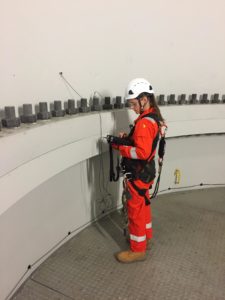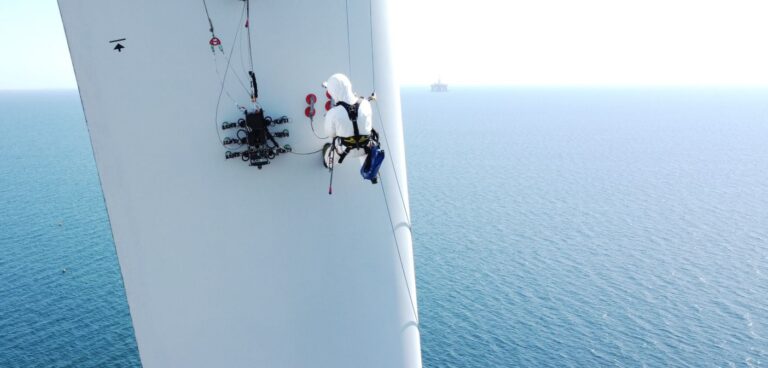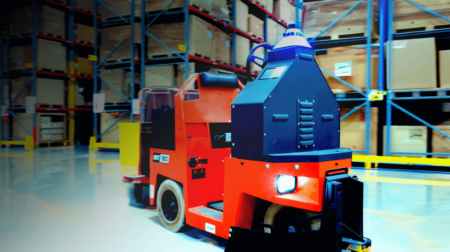A UK-based venture is bringing together robotic solutions to ensure the integrity of the millions of bolts that hold wind turbines together, a move that is described as essential to the expansion of offshore wind, and the world’s net-zero future.
The new project announced on Wednesday [26 May] by the Offshore Renewable Energy (ORE) Catapult combines the six-legged BladeBUG inspect-and-repair robot for turbine blades and EchoBolt’s ultrasonic bolt inspection device.
This collaboration, funded by Innovate UK, will expand BladeBUG’s capabilities, allowing the robot to crawl turbine structures and test bolt integrity using ultrasonics.

Turbine developer GE Renewable Energy, which plays a supporting role in the new project as technology advisor, estimates that the companies’ technology fusion will unlock cost savings of 75% in bolt maintenance and repair bills. The potential market prize ahead of the solution’s developers is estimated at £150m per year by 2030.
Anthony Gordon, programme manager at GE Renewable Energy, said: “The speed and efficiency of the solution convinced GE Renewable Energy to back the new project.
“These are two highly disruptive technologies that have emerged from the UK supply chain and hold great promise.
“Future offshore working must be ever more smart, safe and efficient. That is why we are keen to support these developers in reaching the full potential of their solutions.”
According to the project, there are more than 30,000 blades and more than 10 million bolts in the UK wind sector that require this level of maintenance. To meet the UK’s net-zero target of 75GW of offshore wind capacity by 2050, technicians of the future would need to cover almost a quarter of a million blades and 79 million bolts.
ORE Catapult added without using robotics and smart technologies, this scale of expansion will simply not be technically or financially feasible.
“As offshore renewables expand and these maintenance tasks become truly mammoth, robotics will be a vital part of the mix, and we see them both working autonomously and alongside offshore technicians,” said Peter MacDonald, head of engineering at ORE Catapult.
“In addition, these solutions pave the way for remote operation from onshore control centres and cross-discipline job creation opportunities.”








